Here are the best things to do in Bariloche, Argentina during your visit!
San Carlos de Bariloche, more commonly known as Bariloche, is situated in the Province of Río Negro in Northern Patagonia.
The city sits on the shores of Nahuel Huapi Lake, boasts an epic backdrop featuring the Andes Mountains, and has a distinct Swiss-alpine architectural style.
In many ways, Bariloche is the perfect introduction to northern Argentine Patagonia. It’s a short flight from Buenos Aires, it offers plenty of outdoor adventures, plus it has a great food and beer scene with restaurants, breweries, and chocolate shops galore!
The nice thing about travelling to Bariloche is that it’s a versatile destination that can suit your exact travel style. You can have a relaxing holiday at a lakeside cabin, or tackle a multi-day trek sleeping in mountain refugios. You can enjoy the city’s shopping and restaurant scene, or fill your days with outdoor activities like kayaking and horseback riding.
Bariloche is whatever you want it to be. So with that in mind, we’re going to share some of the best things to do in Bariloche, fun tours and easy day trips you can go on, foods to try, where to stay and so much more.
The following is the ultimate Bariloche travel guide!
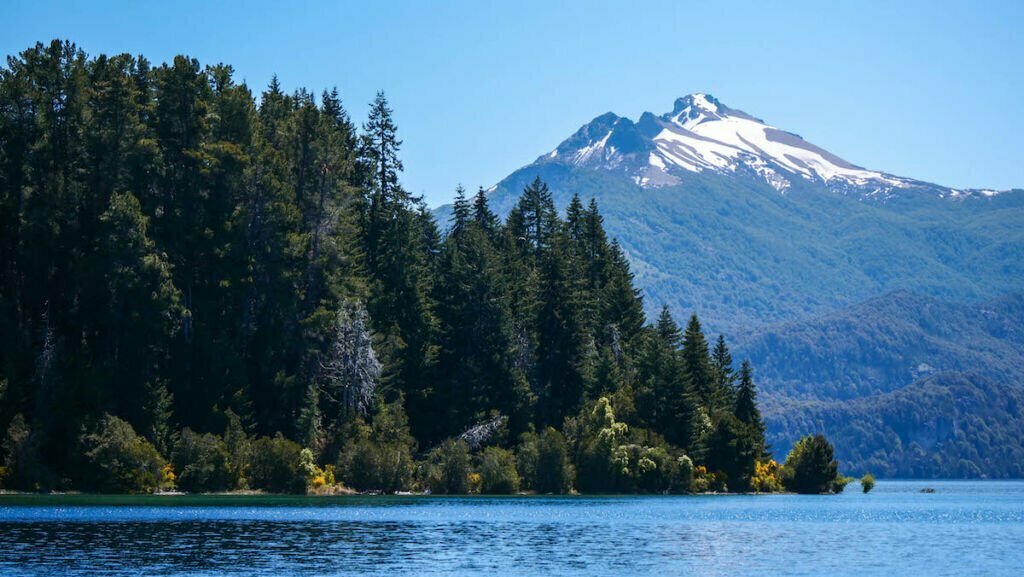
Getting to Bariloche
Air
There are multiple flights per day connecting Bariloche with Buenos Aires and other major cities across Argentina.
If you’re flying in from Buenos Aires, you have two airport choices: Aeroparque (AEP) which is in the city, or Ezeiza (EZE) which is in the outskirts. The flight time is around 2 hours and 15 minutes.
Alternatively, you can also get flights from Cordoba, Mendoza and El Calafate, though some destinations don’t offer these flights daily.
Aerolineas Argentinas is the national airline, plus you also have low-cost carriers like FlyBondi and jetSMART.
Bus
Numerous bus routes connect Bariloche with the rest of the country. Two of the most popular companies are Via Bariloche and Via TAC. You can browse their routes and rates on BusBud.
Train
You can also reach Bariloche by train aboard the Trén Patagónico which crosses Patagonia widthwise from Viedma to Bariloche.
There’s only one departure per week, so if you really want to take the train, you’ll have to plan accordingly.
Keep in mind that there is no direct train from Buenos Aires to Bariloche, so you’ll first have to catch a connecting train from Buenos Aires to Viedma in order to travel aboard the Trén Patagónico.
Here’s our guide detailing how to get to Bariloche.
Things to do in Bariloche
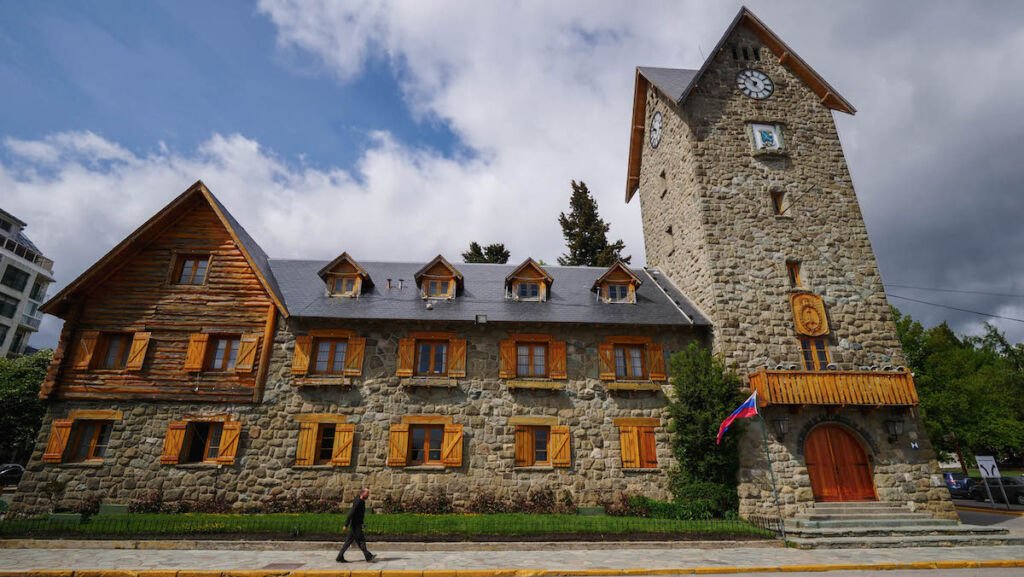
1. Take a Bariloche Walking Tour
A great way to learn about Bariloche’s history and get a good lay of the land is by joining a guided walking tour of the city center.
There are numerous Bariloche walking tours to choose from each with a different focus. You have tours that focus on German immigration, Indigenous Peoples, secrets of Bariloche and so much more!
I would recommend doing this early on in your visit so you can retrace your steps to any places that catch your interest.
The most popular walking tour in Bariloche is this 1.5-hour German Footprint walking tour that looks at the different waves of German immigration that took place before and after World War II and how these shaped Bariloche.
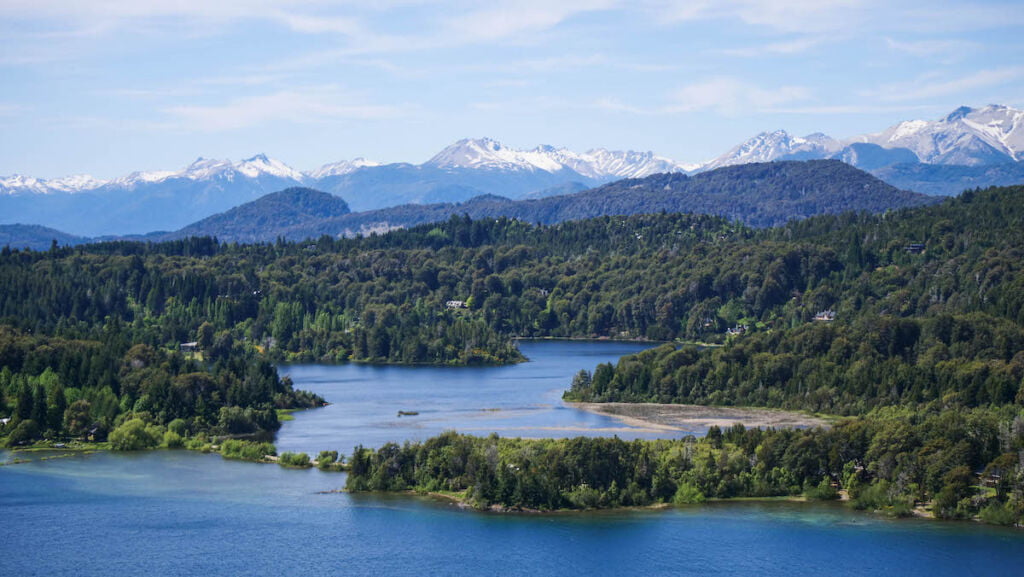
2. Drive the Circuito Chico
One must-do activity in Bariloche is to drive the Circuito Chico, which literally means ‘short circuit’.
This scenic drive follows the shores of Lago Nahuel Huapi as you leave Bariloche heading northwest, and it loops around various lakes before circling back towards Bariloche.
Along the way, there are scenic lookout points, breweries, restaurants, hiking trails, kayak rentals, and everything you could possibly want for a beautiful day out in nature.
This drive is typically done in half a day including stops for food and photos, however, you could easily turn it into a full-day activity by hiking Cerro Llao Llao or kayaking Lago Moreno (you can rent kayaks at Playa Sin Viento).
If you don’t want to rent a car, you can join a guided tour of Bariloche’s Circuito Chico. This half-day tour includes a stop at Cerro Campanario (it’s worth paying to ride the chairlift to the top), and you visit a few different landmarks and lookout points along the way.
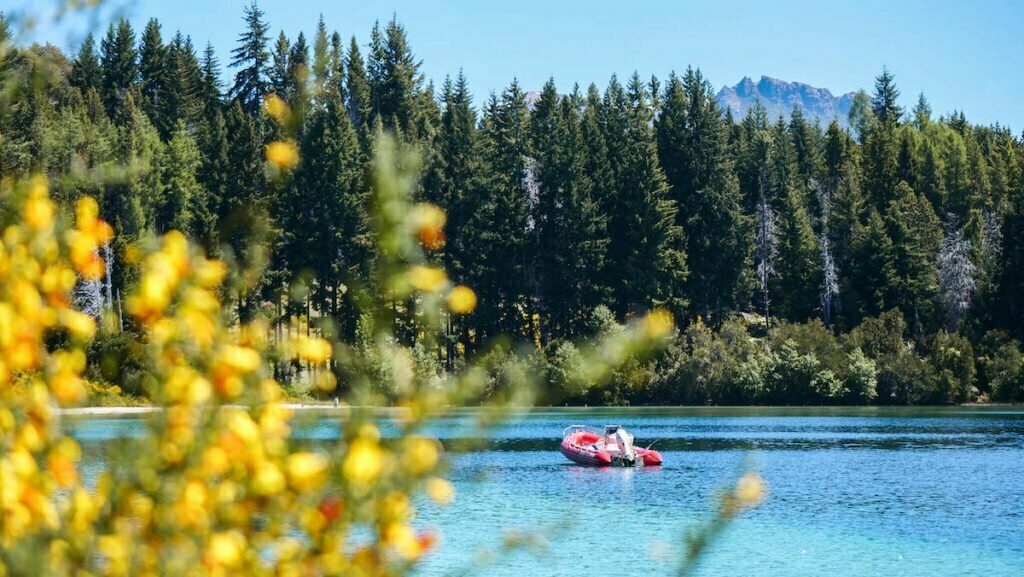
3. See Isla Victoria & Arrayanes Forest by Boat
The most popular boat excursion in Bariloche is the trip to Isla Victoria and the Arrayanes Forest.
This excursion departs from Puerto Pañuelo and the catamaran cruises the waters of Nahuel Huapi towards the Quetrihué Peninsula where you visit the famous Arrayanes Forest. This is a protected forest with cinnamon-coloured trees that are said to have inspired Disney’s Bambi.
After visiting the forest, you journey on towards Isla Victoria where you disembark and go on a guided hike of the island.
Alternatively, you can use this time to explore the island at your leisure. There’s a nice beach called Playa del Toro and though the waters are chilly year-round, that doesn’t stop people from enjoying a summer dip!
It is possible to spend the night on the island at Isla Victoria Lodge, but you’ll need to book ahead of time.
This boat tour visits Isla Victoria and the Arrayanes Forest. It runs 6-7 hours in length and it’s a day filled with epic mountain and lake views, as well as plenty of time to explore the island on foot.
Tip: You can also visit the Arrayanes Forest from the town of Villa La Angostura if that works better for your itinerary.
4. Visit Puerto Blest & Los Cantaros Waterfall
Puerto Blest is located on the western end of Lake Nahuel Huapi close to the border with Chile. It’s one of the most secluded and pristine arms of the lake surrounded by dense Valdivian rainforest.
The journey begins in Puerto Pañuelo and after an hour of sailing, you’ll see Centinela Island, where the remains of Perito Moreno lie – he was the father of Argentine national parks.
From there, the trip continues to Puerto Cántaros, where you disembark to visit Cascada de los Cántaros, Lago Cántaro and a 1500-year-old Alerce tree.
This is raw nature at its finest and if you want to stay overnight, you can do so at Hotel Puerto Blest, though you’ll need to book in advance and also keep in mind that this hotel is only open seasonally.
Guests staying overnight can hike to Lago Frías whose milky green waters flow down from the glacier on Cerro Tronador.
You can book your day trip to Puerto Blest and Los Cantaros Waterfall here. This is a 9-hour excursion and you will spend time outdoors hiking, so dress accordinly, especially if you’re visiting outside the summer season.
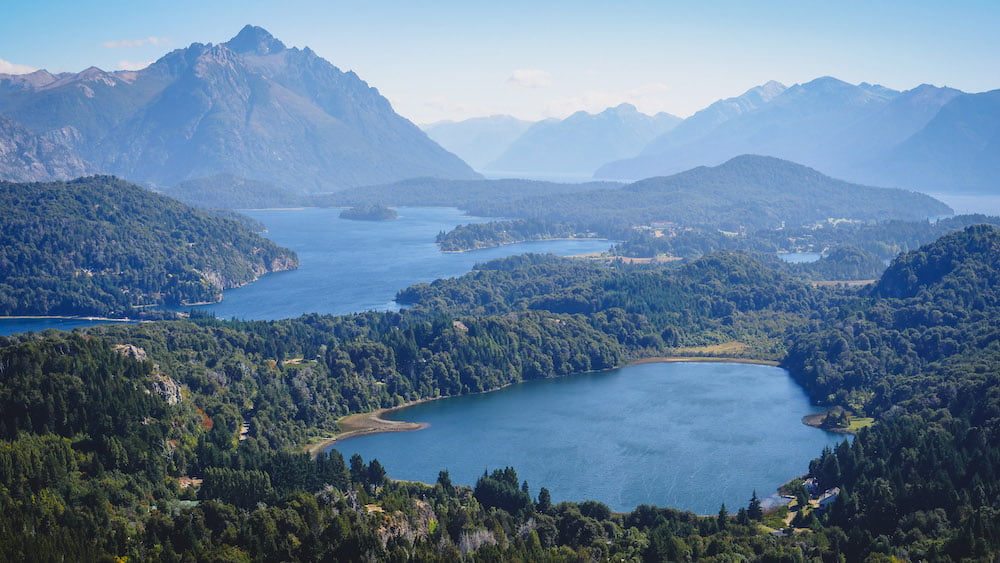
5. Admire the views from Cerro Campanario
Cerro Campanario is a must-visit spot for its beautiful panoramic views of the region.
You can reach the mountaintop by either hiking or taking the chairlift. I’d recommend the chairlift since there are much prettier hikes in Bariloche!
Once you reach the top, you’ll have 360-degree views of Nahuel Huapi Lake, Moreno Lake, El Trébol Lagoon, San Pedro Peninsula, Isla Victoria, Cerro Otto, Cerro López, Cerro Goye, Cerro Bellavista, Cerro Catedral and the Llao Llao Hotel.
Cerro Campanario was voted one of the best panoramic views in the world by National Geographic, so you know it’s good!
6. Enjoy year-round fun at Cerro Catedral
Cerro Catedral or Cathedral Mountain is named after its cathedral-like peaks and spires which resemble the steeples of a Gothic church. This mountain is primarily known for its ski resort.
Catedral Alta Patagonia is the largest ski resort in the Southern Hemisphere, offering over 120 kilometres worth of ski runs. The resort caters to all skill levels, from beginners to expert skiers and snowboarders.
The mountain also offers opportunities for snowshoeing and snowmobile tours during the winter season.
When the snow melts, Cerro Catedral transforms into a hub for summer activities. Hiking, mountain biking, rock climbing, and paragliding are all popular activities.
Numerous trails crisscross the mountain, offering varying levels of difficulty and providing panoramic views of the Nahuel Huapi Lake and the surrounding Andes.
A system of lifts, including gondolas and chairlifts, operates year-round, providing breathtaking aerial views of the region.
7. Hike Cerro Tronador
Cerro Tronador translates to Thundering Mountain and it gets its name due to the deafening sound that occurs when massive chunks of ice break off the glaciers and crash down.
The peak of Cerro Tronador stands 3,491 meters above sea level making it the highest mountain in the Argentine Lake District.
This extinct stratovolcano sits on the border between Argentina and Chile, and it draws avid mountaineers.
It is possible to visit the base of Cerro Tronador on a day trip from Bariloche, where get views of the Ventisquero Negro Glacier.
You can book your full-day excursion to Cerro Tronador to see the hanging glacier. This is a 9-hour tour where you’ll get to see some hard to reach corners of Nahuel Huapi National Park.
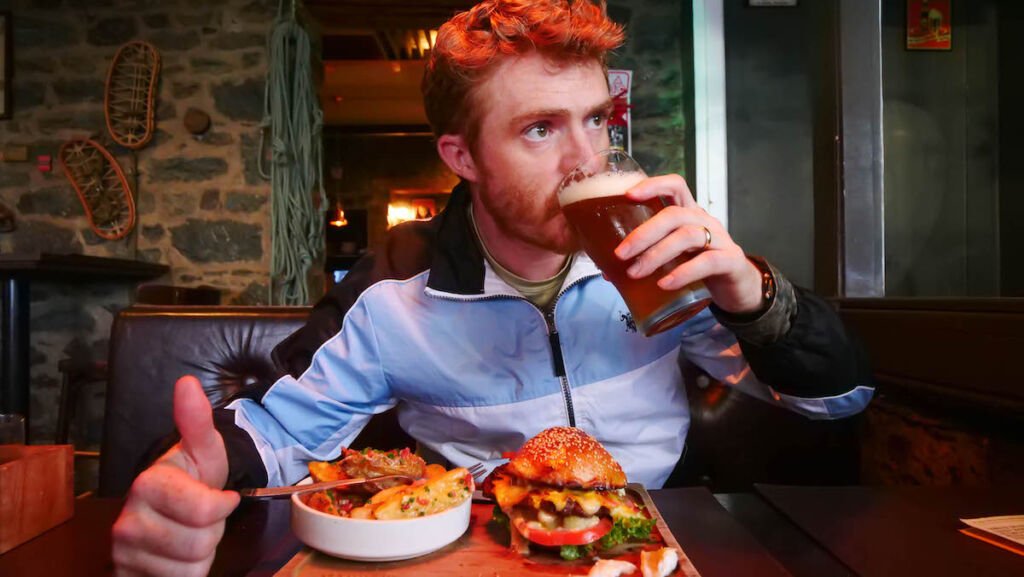
8. Try Patagonian Craft Beers
Bariloche is synonymous with craft beer and you could easily visit a different brewery each day of the week and not run out of places.
Some of our personal favourites include:
- Cervecería Patagonia – this place has epic views! Sip on your beer and admire the views of lakes and snow-capped mountains.
- Cervecería Gilbert – this is a cozy and rustic brewery that serves up Patagonian dishes like deer stew, wild boar and trout.
- Cervecería Manush – this brewpub does a nice beer flight which pairs well with their gourmet burgers.
9. Kayak Bariloche’s Lakes and Rivers
With Bariloche’s endless crystalline lakes and rivers, there are plenty of kayaking opportunities available.
Lago Moreno and Lago Nahuel Huapi are two popular destinations for kayaking excursions.
Don’t worry if you’re not a super experienced kayaker, the guides will choose a kayaking route suited to your level of experience and also weather conditions seeing as some lakes are windier than others.
If you’re up for an adventure, opt for a full-day kayaking tour that includes a picnic-style lunch and the opportunity to enjoy a swim.
This Bariloche kayaking tour is tailored to your skill level and it’s a great way to enjoy a day out in Argentina’s Lake District. Snacks, beverages, and a picnic are provided.
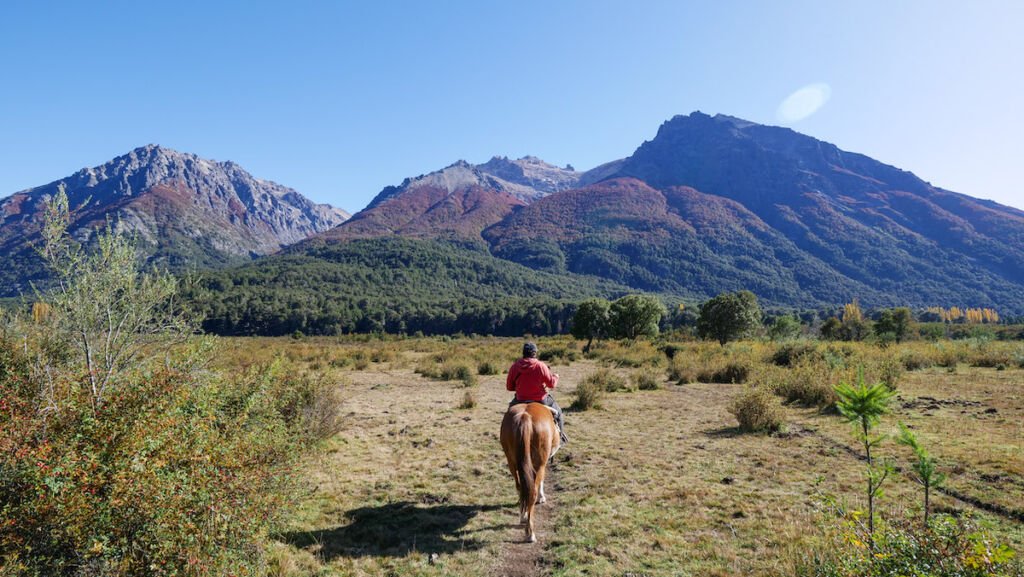
10. Join a Horseback Riding Tour
If you’re looking for some active things to do in Bariloche, consider going on a horseback riding tour. It’s such a fun way to enjoy the Patagonian landscapes.
We did a guided horse trek around Lago Gutierrez where we got to ride through forests, past mountains, and along the lakeshore before returning to camp for a traditional Argentine barbecue.
This horseback riding tour takes you on a 2-hour trail ride along the foothills of the Andes Mountains. Back at the ranch, you get to enjoy a traditional Argentine BBQ lunch.
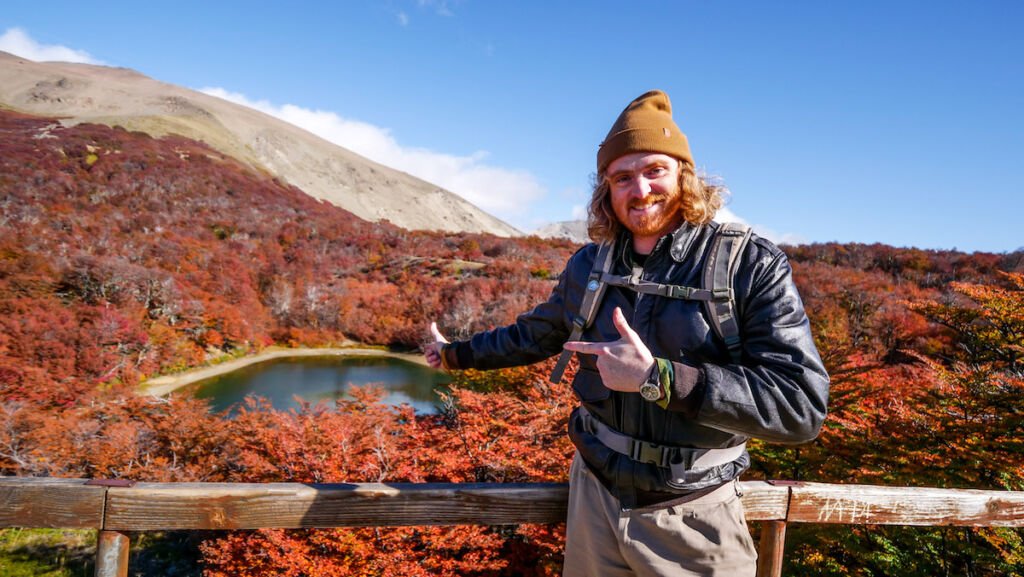
11. Tackle the numerous Hiking Trails
One of the best things to do in Bariloche is to go hiking. You are in a city surrounded by mountains, after all!
There are hundreds of trails to choose from, which can make it a little tricky to decide exactly where to go. All Trails has a list of 200+ hiking trails in and around Bariloche to give you an idea.
Refugio Frey is without a doubt the most iconic hike. It departs from the base of Cerro Catedral in Villa Cerro Catedral about a 30-minute drive from downtown Bariloche. This trail is 9.5km one way, and while you can go up and down in one day, many choose to stay overnight in the alpine refugio which is part of the charm.
If you’re not an experienced hiker and you find the prospect of venturing off on a solo hike a bit daunting, you can book a hiking tour. The local guides will tailor the experience based on your fitness and experience level and choose a trail accordingly.
This private hiking tour runs 6-8 hours and can be tailored to your interests and fitness level. It includes snacks, lunch and all necessary hiking equipment.
12. Go up Cerro Otto for more views
More views? Yes, more views! When you’re visiting a mountain city, there are views to be had at every turn.
Cerro Otto is a mountain located in Nahuel Huapi National Park and it stands 1405 meters tall.
This mountain is a year-round destination. During the winter months, you can go skiing, snowboarding and sledding. Meanwhile, during the warmer months, you can enjoy the hiking trails as well as the zipline and aerial adventures.
You can take a chairlift to the top of Cerro Otto. It’s a 12-minute journey and you get to enjoy panoramic views along the way.
If you get hungry at the top, there’s a rotating restaurant called Confitería Giratoria Cerro Otto.
13. Tour the interior of Bariloche Cathedral
Bariloche Cathedral is also known as the Cathedral of Our Lady of Nahuel Huapi.
The cathedral was built between 1942 and 1944 in a French Neo-Gothic style featuring stained glass windows and vaulted ceilings.
It was the work of Alejandro Bustillo, an architect known for many iconic structures across Patagonia including the Llao Llao Hotel.
The location couldn’t get any better. The cathedral overlooks Nahual Huapi Lake and it’s encircled by a plaza with beautiful gardens.
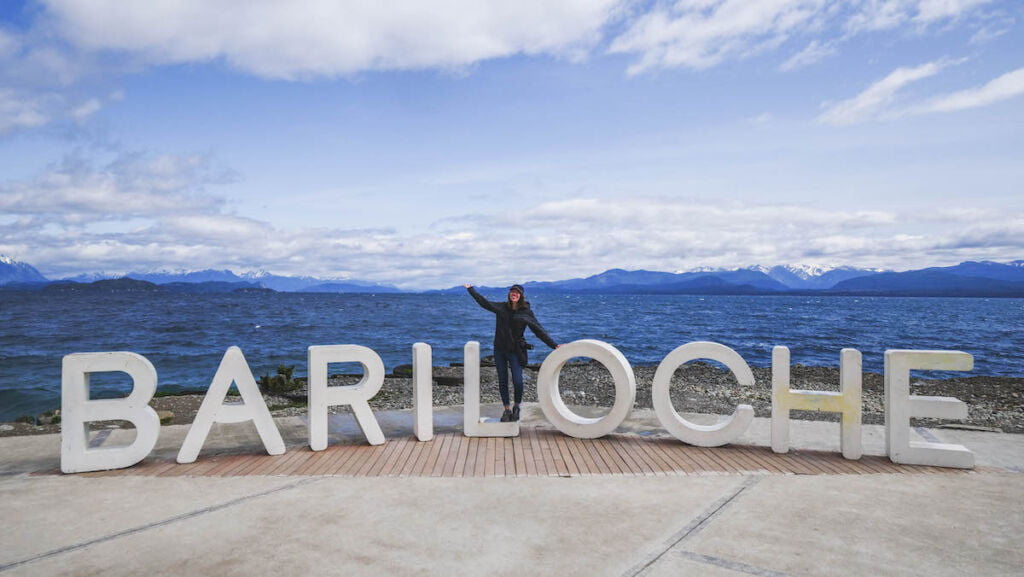
14. Pose by the Bariloche city sign
Argentina loves its city signs and they’re always a good opportunity to snap some photos and capture memories.
The Bariloche city sign sits on the shores of Nahual Huapi Lake, so the views are pretty phenomenal.
There’s usually a line of people waiting to snap their pictures, so the person behind will take a picture for the person in front and the favour is returned down the line.
15. Try your Hand at Fly Fishing
While most avid fishermen would likely book themselves into a fishing lodge for a week, it is possible to book fly fishing day tours from Bariloche.
These trips are a great way to experience the Patagonia wilderness while accompanied by an expert fishing guide who knows where to catch the best trout – rainbows, browns and brookies!
Some of the fly fishing spots of choice include the Limay River, Manso River, and Pichi Leufu River in the heart of Nahuel Huapi National Park.
These tours are high ticket items, but they include private transportation from your hotel to the fishing sites, boats when required, one bilingual guide per 2 anglers, and a full lunch with unlimited wine and beer, plus all necessary fishing gear.
Gratuities and the fishing license from the national park are extra.
This Bariloche fly fishing tour is rated a solid 5 stars and it has 275+ rave reviews. The private tour is open to seasoned fisherman as well as first-timers who want to reel in a big catch.
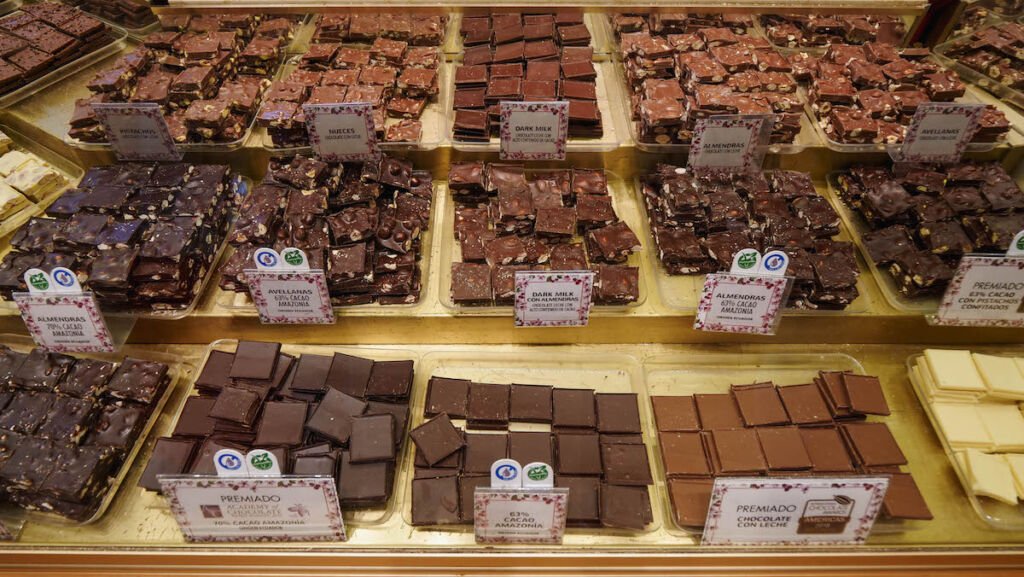
16. Sample Artisanal Patagonian Chocolate
One of the best things to do in Bariloche if you have a sweet tooth is to go chocolate shop hopping. There are even more chocolate shops than there are breweries, so you really have no excuses. A few chocolate shops to visit include:
- Mamuschka – enjoy breakfast or afternoon tea with delicious cakes and pastries, and then stock up on chocolates to take back home.
- Rapa Nui – features a cafe, an ice cream parlour and a skating rink all under the same roof. Their chocolate-covered raspberries are super famous and worth trying.
- Benroth – third-generation chocolatiers working their magic. Dark chocolate, milk chocolate, white chocolate – they do it all, and they do it well!
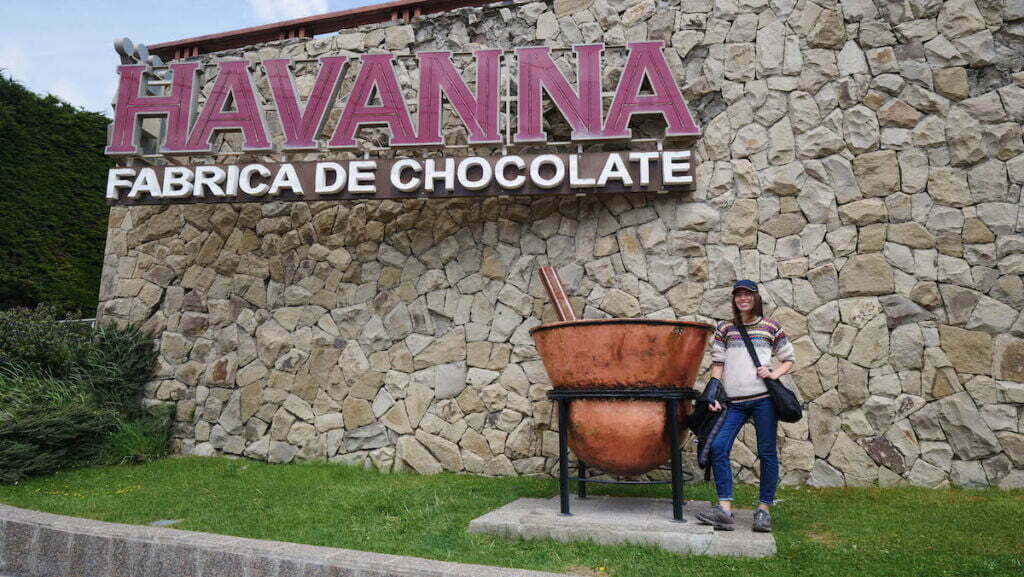
17. Visit the Havanna Chocolate Museum
Havanna is one of Argentina’s most iconic brands and it is best known for its alfajores, a traditional Argentine treat consisting of two crumbly cookies filled with a creamy caramel-like spread called dulce de leche.
The Museo del Chocolate Havanna in Bariloche offers visitors a unique opportunity to delve deep into the world of chocolate, exploring the production process and history from its ancient Mesoamerican roots to its arrival in Europe and subsequent global spread.
The museum has some impressive sculptures made entirely out of chocolate depicting some of the local wildlife including foxes, penguins, pumas and condors!
After visiting the museum, you exit through the Havanna cafe where you can purchase some souvenirs or have a coffee and an alfajor.
18. Try the street food cars
Walk along the lakeshore near Bariloche Cathedral at lunchtime and you’re bound to find several food trucks serving all sorts of quick bites like pizzas, sandwiches, tacos, burgers and beers. This area is known as Food Truck Paseo del Lago.
Recently, another spot has opened in the city called El Garage and it’s an outdoor food court made up of several food trucks featuring even more options like pasta, shawarmas and savoury crepes.
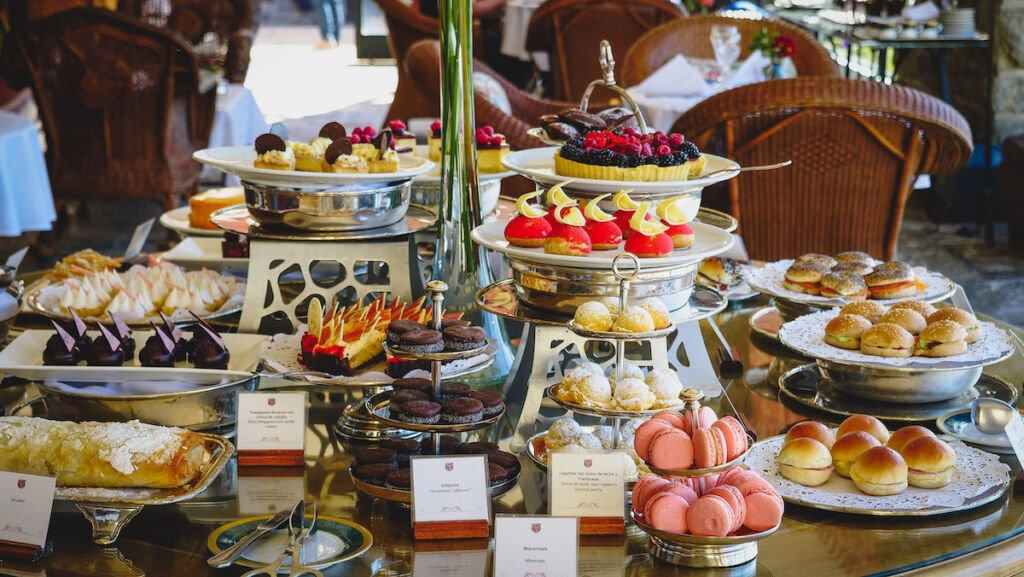
19. Afternoon Tea at Llao Llao
Another fun thing to do in Bariloche is to go for afternoon tea in the Winter Garden at the Llao Llao Hotel. This is a 5-star hotel in an incredible location surrounded by lakes and mountains.
Their afternoon tea is simply divine featuring all sorts of tarts, macarons, brownies, pies and bite-sized sandwiches.
If you’re not planning to stay here as a guest, this is a nice way to get to see the interior of the hotel.
Tip: Afternoon tea at the Llao Llao Hotel is an activity that needs to be booked in advance. You can do so by contacting the hotel’s reservations desk.
Day Trips from Bariloche
Now, let’s move on to the day trips from Bariloche and there are plenty of them! The driving time from Bariloche to these destinations ranges from 35 minutes to 2 hours and 20 minutes, so they’re all very manageable distances.
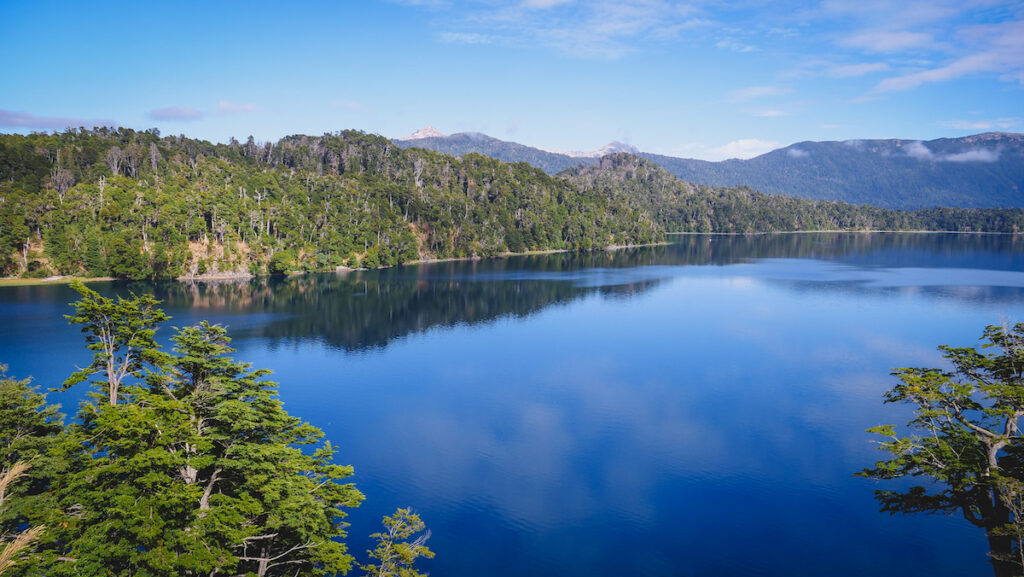
20. Route of the Seven Lakes
Driving time: Full-day activity with multiple stops
The Route of the Seven Lakes is a scenic 107-kilometre road trip that stretches from the town of Villa La Angostura to San Martin de los Andes.
It runs along a stretch of National Route 40, which is the highway that crosses the full length of Argentina, and it’s a beautiful journey filled with snow-capped mountains, lush forests and pristine lakes.
It also crosses two national parks: Lanín National Park and Nahuel Huapi National Park.
This is a full-day activity with plenty of panoramic stops along the way.
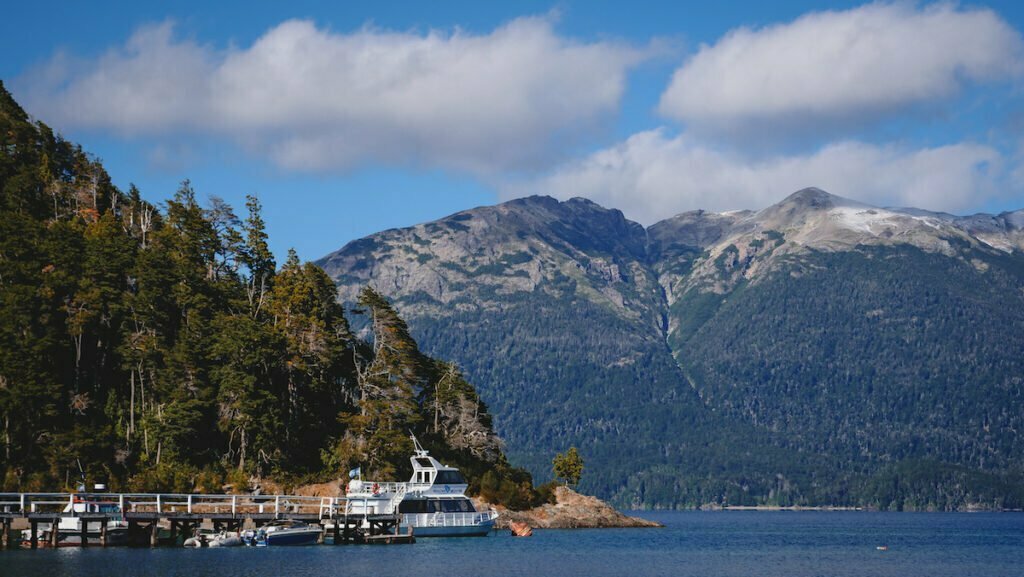
21. Villa La Angostura
Driving time: 1 hour 18 minutes
Villa La Angostura is a high-end resort town that sits on the shores of Nahuel Huapi Lake.
The town is surrounded by crystalline lakes, dense forest, and its streets are lined with rose bushes earning Villa La Angostura its title as ‘the Garden of Patagonia’.
Sailing trips are the activity of choice, plus you can also visit the magical Arrayanes Forest said to have inspired Bambi.
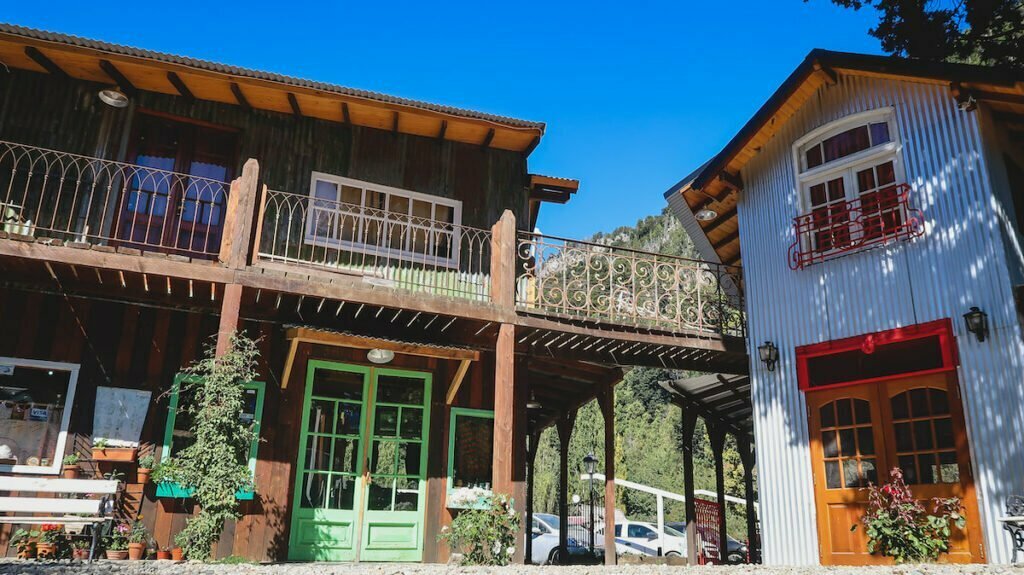
22. Colonia Suiza
Driving time: 35 minutes
Colonia Suiza translates to Swiss Colony and it’s a small settlement in the outskirts of Bariloche whose origins can be traced back to the late 19th century when a group of Swiss immigrants, primarily from the Valais canton, settled in the region.
The thing to do in Colonia Suiza is to try the traditional curanto, a Patagonian dish that’s cooked underground in a pit with hot stones.
Aside from that, you can also find Swiss/German restaurants, breweries and souvenir shops.
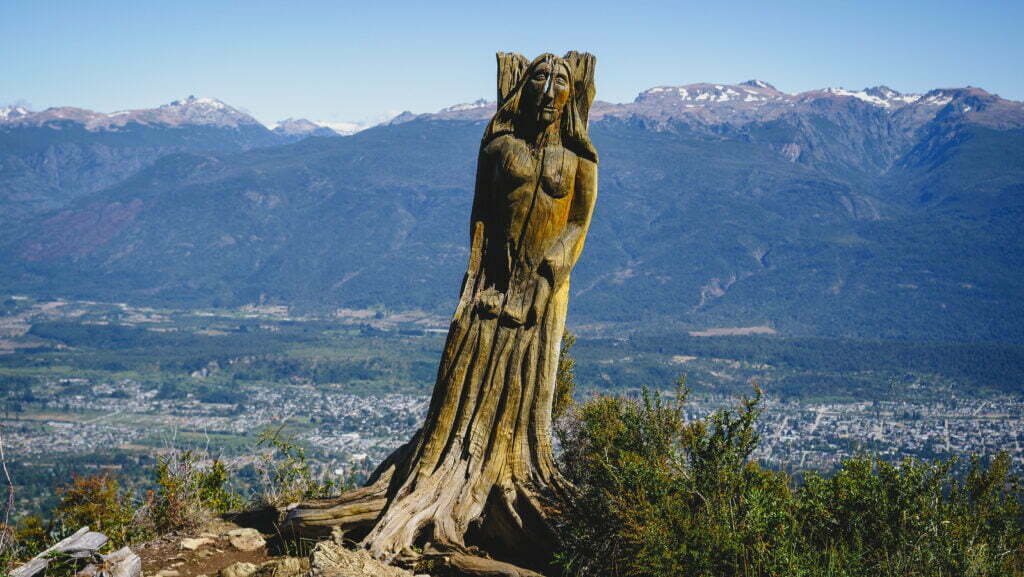
23. El Bolsón
Driving time: 2 hours
El Bolsón is a picturesque mountain town with a decidedly hippie feel. It is framed by Cerro Piltriquitrón, a mountain whose names means “hanging from the clouds”.
Some of the main attractions in El Bolsón include the Sculpture Forest, where a burnt forest became art; and the Feria Artesanal, an outdoor hippie market that sells all sorts of handicrafts.
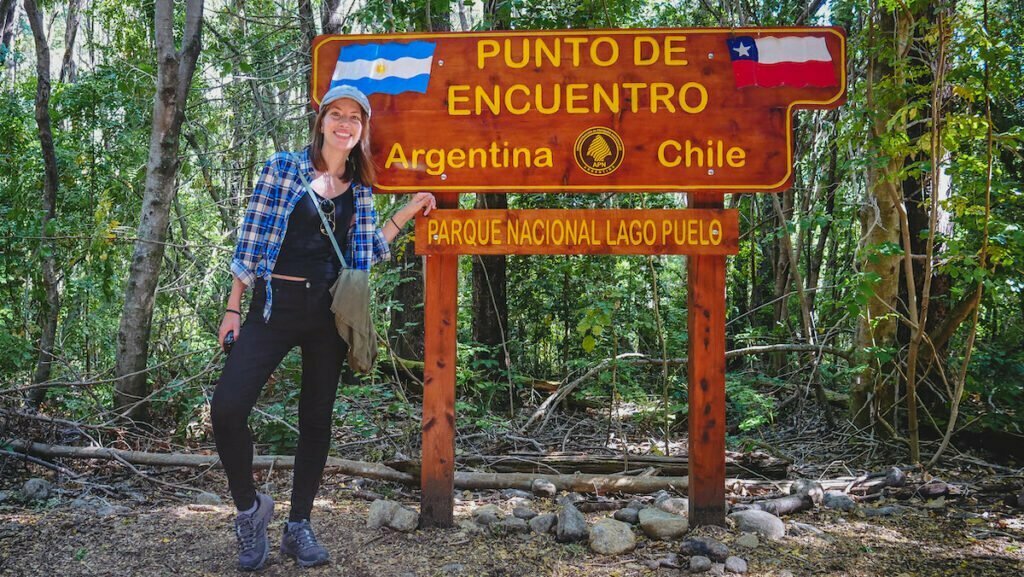
24. Lago Puelo
Driving time: 2 hours 20 minutes
Lago Puelo is a scenic mountain town that sits next to Lago Puelo National Park.
A boat tour of the lake (which turns emerald in certain sections!) is a must-do activity plus it gives you the opportunity to hike to the border with Chile.
Lago Puelo also has plenty of hiking trails, some of which lead to rivers and waterfalls.
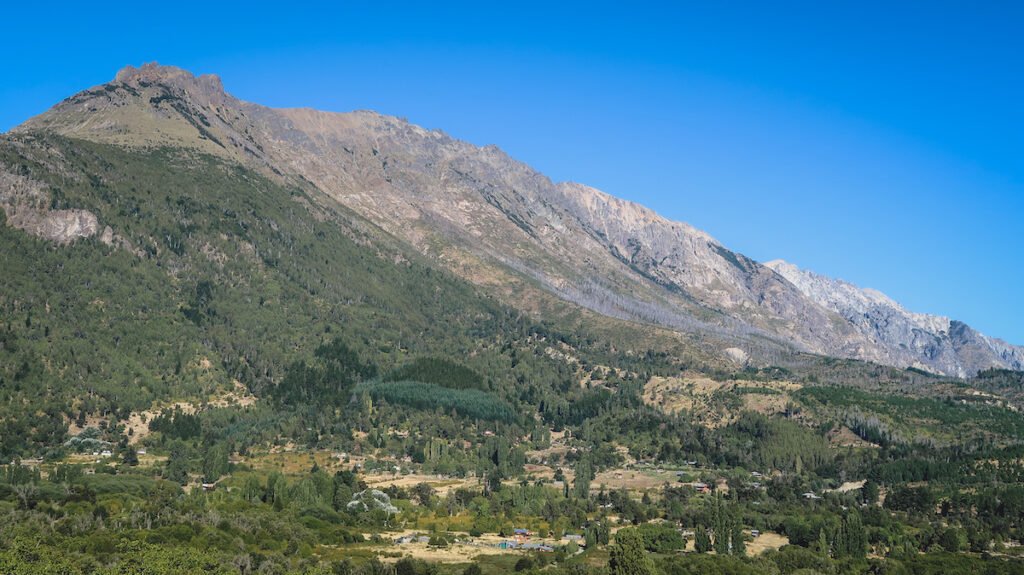
25. El Hoyo
Driving time: 2 hours 18 minutes
El Hoyo is a small mountain community that’s quickly gaining popularity as an agrotourism destination.
There are multiple vineyards that offer guided tours and tastings, there are berry farms to visit, plus you can also try to find your way through the biggest labyrinth in South America.
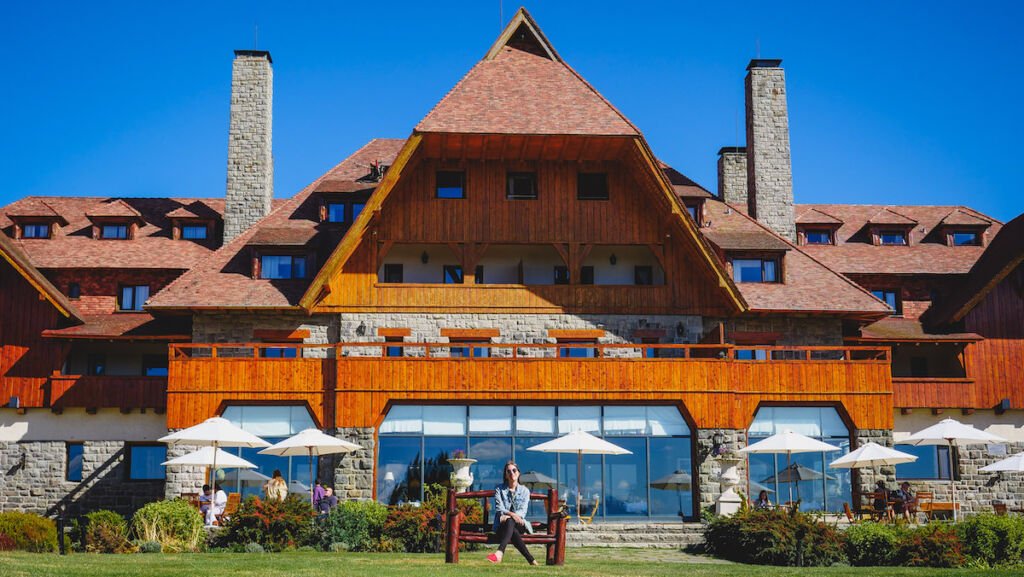
Where to Stay in Bariloche
Llao Llao Resort – this iconic 5-star hillside resort is surrounded by lakes and mountains. This is where everyone dreams of staying in Bariloche!
Hotel Panamericano Bariloche – this 4-star hotel offers rooms with lake or mountain views. It also features a heated pool, a gym, a sauna and a hot tub.
Tierra Gaucha Hostel – this boutique hostel is located right downtown and it includes breakfast.
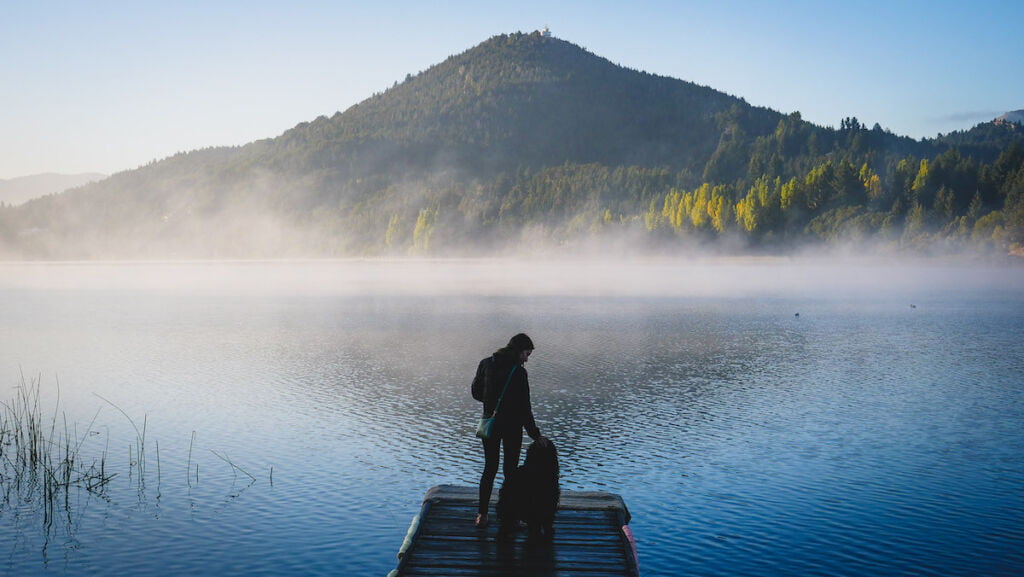
Getting around Bariloche
Car
If you feel comfortable renting a car and driving in Argentina, you will have greater mobility and the freedom to explore.
Many of the attractions, especially the beautiful nature spots, are on the city outskirts.
Bus
Bus #20 is the one that runs from the Bariloche Bus Terminal all the way out to Puerto Pañuelo (where boat tours depart from) and the Llao Llao Hotel.
Bus #13A is the one you need to catch at the Circuito Chico Roundabout if you want to visit Colonia Suiza.
You can pay for the buses in Bariloche using a SUBE card which you can preload with money at various convenience stores around town.
Taxi / Remís
Alternatively, you can get around Bariloche by using a taxi or remís (private taxi). This is a very convenient yet affordable way to get from place to place.
Best time to visit Bariloche
Bariloche is a versatile destination with something to offer year-round. However, the best time to visit largely depends on the type of activities you’re interested in. Here’s a breakdown of Bariloche’s seasons to help you decide:
Summer (December to February)
Summer in Bariloche is warm with averages of 18°C to 25°C (64°F to 77°F). It’s an ideal time for outdoor activities such as hiking, kayaking, mountain biking, and fishing.
The days are long, providing ample time for exploration. This is also peak tourist season, especially in January, so expect larger crowds and higher prices.
Fall (March to May)
Fall in Bariloche is cooler with averages dropping gradually from 18°C to 10°C (64°F to 50°F).
This is one of the best times for photography, as the forests turn shades of red, orange, and gold. It’s also great for hiking and enjoying the landscapes.
There are fewer tourists than in summer but it’s still a relatively popular time to visit, especially for those seeking the fall foliage.
Winter (June to August)
Winter in Bariloche is cold with averages ranging from -2°C to 7°C (28°F to 45°F). Snowfall is common, especially in the higher areas.
This is when Bariloche turns into a winter sports hub. The slopes of Cerro Catedral are busy with skiers and snowboarders. Plus, you can enjoy other winter activities, like snowshoeing, are also popular.
July is the peak winter month, primarily due to the winter school holidays in Argentina, so expect many national tourists.
Spring (September to November)
Spring in Bariloche sees averages from 6°C to 17°C (43°F to 63°F). As the snow melts, hiking trails become accessible again, and the region starts to bloom, providing a fresh and vibrant landscape for various outdoor activities.
While the early part of spring can be quiet, by November, as temperatures rise, tourists begin to return.
The best time to visit Bariloche really depends on your preferences. If you love winter sports, visit between June and August. If hiking, warm weather, and water activities are your preference, December to February is ideal, but prepare for more crowds. For a quieter, scenic experience with fall colours, consider March to May. For a balance of good weather and fewer tourists, late spring (October and November) might be the best choice.
